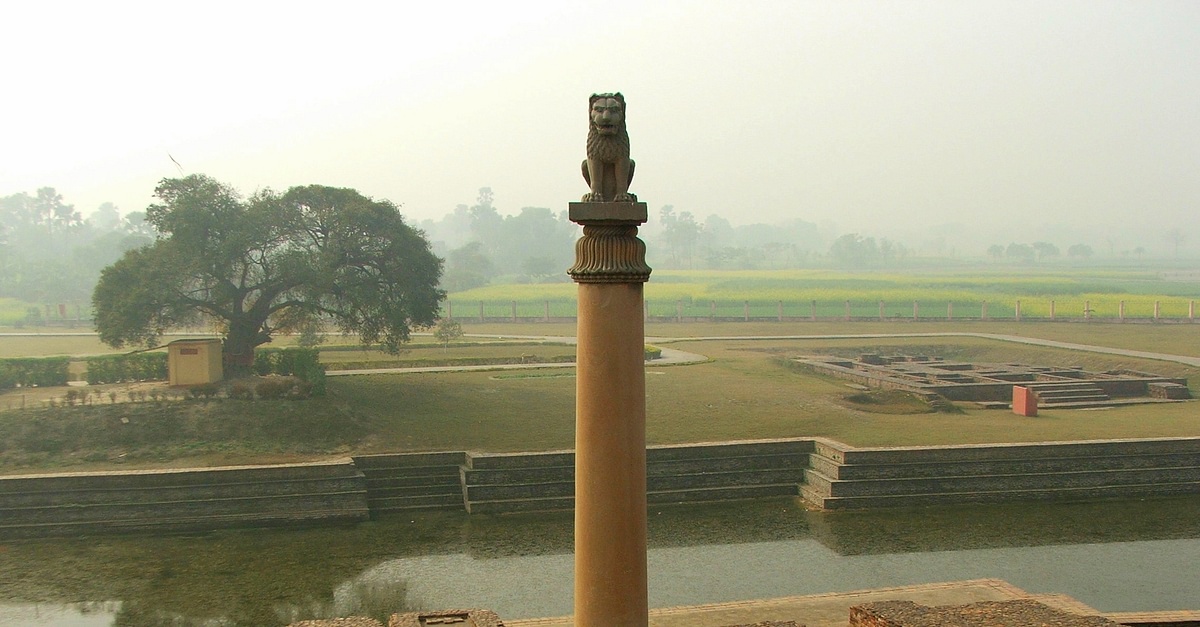Darjeeling: The Queen of the Hills in West Bengal Darjeeling, nestled in the Indian state of West Bengal, is one […]

About Ashokan Pillar, Vaishali, Bihar
The Ashokan Pillar in Vaishali, Bihar, is one of the most iconic monuments erected by the Mauryan emperor Ashoka in the 3rd century BCE. It is a symbol of the emperor’s devotion to Buddhism and his efforts to spread its teachings throughout his empire. Vaishali, an important historical and religious site, holds significance in both Jainism and Buddhism, and this pillar is one of the key landmarks that highlight its Buddhist connection.
The Ashokan Pillar in Vaishali is one of the many pillars Ashoka had installed across his vast empire to commemorate significant events in the life of Gautama Buddha. This particular pillar marks the place where Buddha delivered his last sermon before attaining Mahaparinirvana. The pillar is made of a single block of highly polished red sandstone, showcasing the incredible craftsmanship of ancient Indian stone carvers.
At the top of the pillar, a life-sized figure of a lion stands, symbolizing strength, courage, and Buddha’s leadership. Unlike many other Ashokan Pillars that are engraved with edicts, the Vaishali pillar is plain, without inscriptions. It stands tall and erect at 18.3 meters (60 feet), a silent yet powerful reminder of the region’s deep connection to Buddhism.
In addition to its religious significance, the Ashokan Pillar in Vaishali is also an important archaeological site. It offers insight into the advanced technological and artistic abilities of the Mauryan period and serves as a testimony to Emperor Ashoka’s patronage of Buddhism and his efforts to promote peace and non-violence.
Historical Significance of Vaishali
Vaishali is known as the world’s first republic, where a democratic system of governance was established as early as the 6th century BCE. It was also a significant center for both Buddhism and Jainism. In Buddhism, it holds importance as the place where Buddha gave his final sermon and announced his impending death. The Second Buddhist Council was also held in Vaishali, around 383 BCE, to resolve disputes among Buddhist monks about monastic rules.
In Jainism, Vaishali is celebrated as the birthplace of Lord Mahavira, the 24th Tirthankara, making it a key pilgrimage site for Jains as well.
How to Reach Ashokan Pillar, Vaishali, Bihar
The Ashokan Pillar is located in Kolhua, which is part of the Vaishali district in Bihar. The site is approximately 55 kilometers from Patna, the state capital, and is easily accessible via road, rail, and air.
By Air:
The nearest airport is Jay Prakash Narayan International Airport in Patna, which is around 60 kilometers from Vaishali. The airport has regular flights connecting it to major cities like Delhi, Mumbai, Kolkata, and Bangalore. From the airport, you can hire a taxi or take a bus to Vaishali, which takes approximately 1.5 to 2 hours.
By Rail:
The closest railway station to Vaishali is Hajipur Junction, which is about 35 kilometers away. Hajipur is well-connected by rail to Patna and other major cities. From Hajipur, taxis and local buses are available to reach the Ashokan Pillar in Vaishali. You can also travel via Patna Junction, one of the main railheads in Bihar, which is around 55 kilometers away from the site.
By Road:
Vaishali is well-connected by road to Patna and other nearby cities. National Highway 22 links Patna to Vaishali, and the drive takes around 1.5 hours. You can hire a private taxi, take a bus, or even rent a car to reach the Ashokan Pillar site. Regular buses operate between Patna and Vaishali, making it a convenient and affordable option for travelers.
Local Transportation:
Once you reach Vaishali, you can easily explore the area using local transportation like auto-rickshaws, cycle-rickshaws, or hired taxis. The Ashokan Pillar is located in a well-known part of Vaishali, so it’s easy to reach once you are in the vicinity.
Conclusion
The Ashokan Pillar in Vaishali is not only an important religious site for Buddhists but also a significant historical and archaeological landmark in India. It stands as a testament to the greatness of Emperor Ashoka and his contributions to spreading the teachings of Buddha. The pillar, along with Vaishali’s other historical and religious sites, offers visitors a rich and immersive experience of India’s ancient history. Whether you are a history enthusiast, a spiritual traveler, or a curious tourist, visiting the Ashokan Pillar and the surrounding areas of Vaishali provides a deep sense of connection to the country’s cultural and spiritual heritage.

